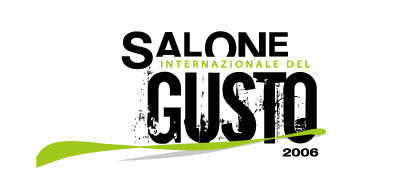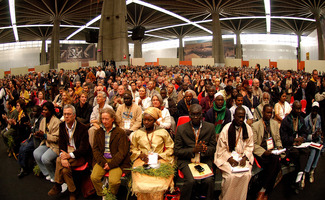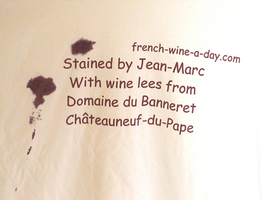October 30, 2006
Alpine rainbow
Driving north through the Alps toward the St. Gotthard tunnel, Swiss-German oldies station plays Beatles "Come Together." Suddenly, between the mountains, a rainbow, pale in the photo but surprising and vivid on the road. An invitation...to what?
Coming out of the tunnel, gray skies and a new landscape: flocks of woolly sheep that keep the steep Alpine slopes trimmed to riding-mower perfection. And on a new station, a Mozart violin concerto. Couldn't make this up.
October 29, 2006
Aperitivos on SlowNight
Last year, happened to be in Orvieto for CittàSlow. This year, in Torino for SlowNight. On the Piazza Castello, musicians from around the world perform on brightly-lit bandstands while tens of thousands listen in the warm night.
Beforehand, make the rounds of Torino's historic bars, celebrated as the cradle of the civilized aperitivo. Could get all fancy with cocktails, but stick to Campari Soda, a pre-mixed concoction, 10 percent alcohol, that comes in its own 10-ml bottle. Drop in at Florio (gold-braided waiters!), Roberto, Mulassano, Caffè Torino. Prepay cashier (3 euros or so), take scrip to barman. Sometimes there's a big spread of appetizers (Italy's Happy Hour, usually 6 euros), sometimes barman makes up a plate of snacks.
Out on the piazza, band strikes up a spirited version of "Saints." Feel blessed.
October 27, 2006
The Future of Food: Good, Clean, Fair

This would not be a good week to have dinner at Chez Panisse, Berkeley's temple of enlightened eating. Alice Waters and what seems like her entire crew are here in Turin, Italy, for the Salone del Gusto, a biannual gathering of the "global food village" put on by Slow Food.
Plenty of heavy-hitters. At the Theater of Taste tomorrow night, the Spanish super-chef Ferran Adria leads a workshop on, gulp, simple kitchen tricks; do they involve a hand-held blender? In one corner of the press room, Ruth Reichl of Gourmet, cell-phone under her curls, waves to a friend across the writers' carrels. Michael Pollan, America's voice for sustainable agriculture, is here for a panel on biodiversity. Harold McGee, the modest guru of kitchen science, is on another panel. Joan Nathan autographs a copy of her New American Cooking for a fan. The lone Seattle delegate in the semi-official delegation of 150 American chefs is Jonathan Sundstrom of Lark; haven't actually located him yet.
But it's more than just chefs and food writers. Hundreds of small organizations, representing artisanal producers from around the world, have sent delegations. They're the backbone of the conference, the men and women who till the soil, plant the seeds, milk the goats. Food communities from every continent, breeders, growers, educators. North San Juan Fruit Growers, Washington Chinook Fishermen, cidermakers, bread bakers, wine makers.
They have a serious agenda: to preserve and enhance fresh water supplies (for decent coffee, if nothing else!), to maintain a bank of genetically diverse seeds (not just what's industrially convenient), to keep the food supply lines as short as possible (local is better).
Their motto is "Good, Clean and Fair." Good because eating should be a pleasurable activity; clean because food should be produced without straining the planet's resources; fair because it should promote social justice.

Food authorities from around the globe at Terra Madre, Slow Food's "Mother Earth" symposium.
To complement the high-level food politics, hundreds of artisanal producers are exhibiting and selling their wares to tens of thousands of local visitors here at the sprawling Lingotto fairgrounds. It is, after all, a consumer event as well. Cheeses galore, a selection of 2,500 wines, glorious country hams and sausages, breads baked with flour milled from forgotten grains. Plenty of free samples, and tasting plates cost a modest two or three euros. (No pushing or shoving, though; it's not your voracious, self-centered Bite of Seattle crowd, for sure.)
You cannot leave here without a sense of optimism: the 20-year-old Slow Food movement is changing not just the way we think about food but how we deal with the planet.
October 26, 2006
Strepitoso!
Many bottles since last post, but tonight's gelato requires immediate attention. A simple-enough two-layered pinguino, a take-away cone of nocciola and caffè at Grom, on a side-street across from the train station in downtown Turin. The hazelnuts come from orchards with limited yields, the coffee beans come from Antigua, and the amazingly tasty concoction costs all of $2.50. (Gosh, has it really been a year since the last one of these? Guess so: link.)
Any wonder, then, that there's a line out the door at 10:30 PM on a weeknight? And that the Salone del Gusto here in Turin, gave these guys an award for excellence? That's why I'm here, by the way, for a long weekend of Slow Food events. Expect regular dispatches.
Strepitoso? Got the term from a Slow Food review of Grom's gelato. Means awesome.
October 21, 2006
Marseille: Fish Story
Mediterranean sunrise suffuses the Vieux Port with a golden glow. Along the Quai des Belges, a dozen fishing boats unload their catch. No sleek salmon here; these are bottom feeders, rockfish, scorpionfish, monkfish, as ugly as junkyard dogs, yet critical ingredients in the savory soupe de poissons that is the base for Bouillabaisse.
A shirtsleeve Indian summer evening. There's a restaurant here that actually owns the website www.bouillabaisse.com, but it's closed the two nights I'm in Marseille. No matter. At Chez Loury, the 28-euro "bouillabaisse" menu begins with a kir, then the a tureen of dark, saffron-scented broth, slices of toasted bread and a tub of the red-pepper mayonnaise called rouille for its rusty color.
The maitre d'hotel shows off a tray of the fish that cooked in the soup, specifically weever (vive), gurnard (galinette) and conger eel (congre or fielas). Then, with deftly wielded fork and spoon, he removes the bones, adds boiled potatoes, moistens with more soupe de poissons and delivers the plate to the table.
Drank a terrific white wine with this: a 2004 Clos Ste. Magdeleine, grown on the slopes above the fishing port of Cassis, a few miles up the coast, a sturdy blend of marsanne, clairette and ugni blanc that has enough stamina to keep up with the powerful flavors and spices of the seafood.
For dessert, a quartet of herbal sorbets: verbena, mint, thyme and sorrel. What a conclusion to a day of sensory overload!
October 16, 2006
French connections
So let's start with the wine. We're in Châteauneuf-du-Pape outside Avignon, summer headquarters for the 14th-century breakaway Papacy. The crumbling palace looms over the village and its rocky vineyards.
Châteauneuf square dominated by castle ruins, Banneret's cellar, Jean-Claude Vidal
Jean-Claude Vidal owns six tiny vineyard parcels here (interactive map) planted with old, old vines. There's mourvedre down by the Rhone riverside, syrah and grenache on the slopes. But that's not all; a whole fruit cocktail, 13 traditional varieties, are authorized for Châteauneuf and this wine, Domaine du Banneret, is probably the only Châteauneuf that actually uses them all in its red wine (including six white grapes that bring freshness and acidity to the blend).
The wine is simply stunning. First, it's made the old-fashioned way, without destemming, so the wine benefits from the mineral salts in the stems of the traditional old vines. (Robert Parker, who pretty much put Rhone wines on the map for American wine drinkers, prefers the newer, sleeker style of Châteauneuf produced by the likes of Beaucastel and Vieux Télégraphe.) Very limited production, too: usually 10 to 12 thousand bottles a year.
Jean-Claude is descended from a family that included a governor of Illinois, back when it was French-Indian country. "In memory of my ancestors, I'm not going to make just any old wine," he says.
There's a lushness to this wine, even when young, with power, concentration and complexity. Surprisingly, it's about 15.5 percent alcohol yet smooth on the palate. The 1999 was evolving beautifully, with some leather and spice notes; the 1990 was brick-colored, with raisiny flavors and some serious "animal" notes in the nose.

Jean-Marc Espinasse, Banneret shirt
Now then. You already know Kristin Espinasse, expat author of the totally charming blog French-Word-a-Day. Now meet her husband, Jean-Marc, wine merchant and author of his own blog, French-Wine-a-Day. Among his many, many activities, Jean-Marc sells t-shirts stained with the lees of Banneret on his website. 19 euros! Great idea!!
But wait, there's more. There's even a Seattle celebrity connection. Jean-Marc sells Banneret through Seattle importer Riservati Wines. One of Kristin's relatives is Eric Lindstrom of Veil. on Lower Queen Anne. Ichiro had a bottle with dinner there one night and liked it so much he promptly bought a case!
October 13, 2006
Garden of delights
First thing, your amuse-bouche is an ice cream cone. Looks like vanilla, but it's flavored with mustard. Clearly not in Kansas anymore. Wow!
When Roland Chanliaud opened Jardin des Remparts in Beaune some 15 years ago, he shocked the staid Burgundians with surprising combinations of flavors and unusual presentations. Harder to do today, but not impossible.
Consider his signature appetizer of raw, chopped Charolais beef: everywhere else, it's just steak tartar. At first, Chanliaud simply topped it with an oyster, essentially providing salt for the seasoned beef.
Since those early days, it's developed into something even more sophisticated. The beef is now surrounded with chunks of Gillardeau oysters in a tart mignonette (shallots and white wine vinegar) and topped with a foam of seawater, the oyster liquor and lightly whipped cream. The effect is mesmerizing as the briney, creamy topping oozes into the meat; every spoonful gets seasoned with the oysters and mignonette.
Not an inexpensive dish, mind you; at about $30, it's as costly as the foie gras. Still, very pretty surroundings (yellow hues inside a 1930s manor house filled with modern artifacts) and an excellent wine list. Service not at the same level, however (well-meaning but unpolished), always a problem for country restaurants without a solid, year-round clientele. Roland Chanliaud's cooking deserves a second Michelin star; first, though, he and his wife, Emanuelle, need to hire waitsfaff who'll stick around long enough to become as professional as the wizards in the kitchen.
www.le-jardin-des-remparts.com, Beaune.
October 11, 2006
A dog's life in Burgundy
A veteran world traveler, Yoda seems to prefer the white grand cru, Bâtard Montrachet, to the red, Romanée-Conti. The well-behaved Shih-Tzu's been with us in cellars, vineyards, tastings and restaurants all week, the lucky dog.
What we do is called "tasting with your feet." Nothing imprints a wine's characteristics on your memory like drinking it in the vineyard where it was grown.
October 9, 2006
Learning to love escargots
Don't care what you eat? Quelle horreur! If the greatest sin is indifference, the preventive remedy is education: how to appreciate, how to care. And so, this week in classrooms, lunchrooms and kitchens all over France, the curriculum is as basic as it gets: teaching kids how about food. It's called "La Semaine du Goût," the Week of Taste.
A visit at Burgundy's Clos Vougeot finds a class of wide-eyed 10-year-olds eagerly chomping escargots, foie gras, quenelles of quail, purple potatoes, cake with candied nougat prepared by the chateau's executive chef, Olivier Walsh. Nary a burger, hot dog or pizza in sight. Young gourmets of the world, unite! You have nothing to lose but your McNuggets!
October 8, 2006
Comfort food
Where was Cornichon? Right here, at the Brasserie Georges in Lyon.
Started with a serving of Fines de Claire, oysters "finished" in the intertidal pools of the Marennes region, spending a month or so in algae-rich waters until their edges turn a lovely shade of green. Served with brown bread and butter. Then a Choucroute Royale, slow-simmered sauerkraut and boiled potatoes garnished with smoked pork and sausages. Finish it off with a Café Liegeois of ice cream, coffee syrup and crème chantilly. For me, it's an ideal brasserie meal.
Brasserie Georges is a huge, ornate place, room for 500-600 diners, some celebrating all night, some eating alone and scarfing down a quick, satisfying and fairly priced plat du jour. Democratic, welcoming, satisfying.
More photos on Flickr; click here
October 6, 2006
Où se trouve le Cornichon?
Have Cornichon's phones stopped talking to each other? Wine from Venus, draught from Mars? Seriously, folks: where was this picture taken?
Bonus: name 5 things in the photo that start with B. Reply in the comments. Prize? What, fame & glory not enough? Okay, okay, will send a jar of pickles.
October 5, 2006
Brains, Cheeks & Tails
In Lyon, at Brunet, a traditional and authentic bouchon. Coming back in a couple of weeks with a big group, had to pick a menu that wouldn't offend sensitive tastes. Me, I ate from both ends of the animal: an appetizer of jellied oxtail and cheek, followed by veal brains simply sautéed. As always, one of the attractions of the place is the interaction of the boss, Gilles Maysonnave, and his staff.
October 2, 2006
Mangia, mangia!
Italy's on the march.
The Loveman cometh, the Spiceman goeth. Sean Langan of Café Amore takes over the Spice lounge at the corner of Fifth and Bell. He intends to remodel the Bell St. patio into the main entrance, complete with fountains and Roman columns, show silent movies, name the cocktails for old film stars, and offer 2-for-$25 dinners once a week.
Then he'll turn the current Amore space into a crepe and waffle shop called La Crepe. And he has plans to turn the Spice dining room into yet another concept called Belltown Diner.
For his part, Spice owner Nazir Khamisa will keep his adjacent properties, Beba's Deli and Dos Amigos. He never quite made a go of Spice, which had a large, unfocused menu and was drifitng into a vague nightclub mode.
Good news coming to Queen Anne as well. The "soul" of two popular Italian spots, Belltown's Vita è Bella and Magnolia's Mondello, Enza Sorrentino, is going to open a place of her very own, Sorrentino's Trattoria, where Lumette now stands. She promises homemade pasta that will change the way Seattle thinks about Italian food. Can't wait!

